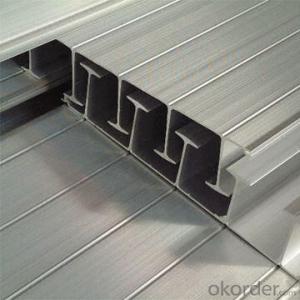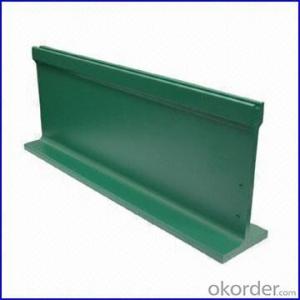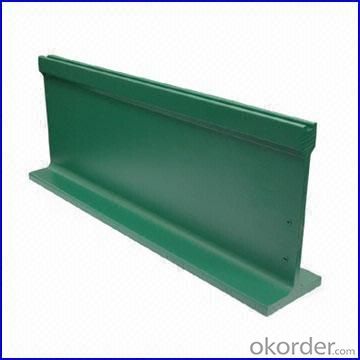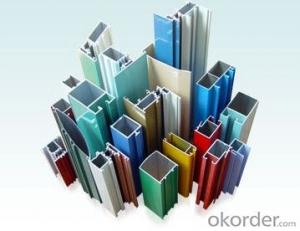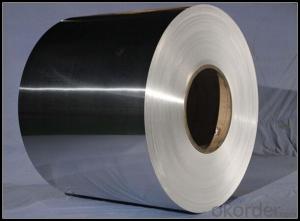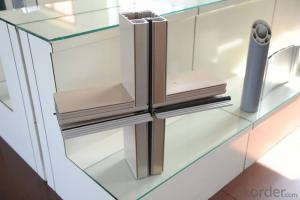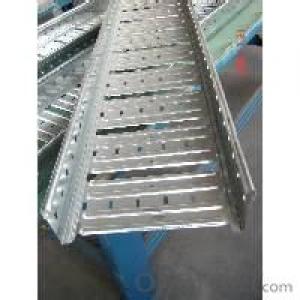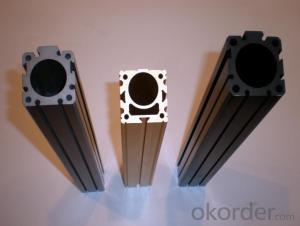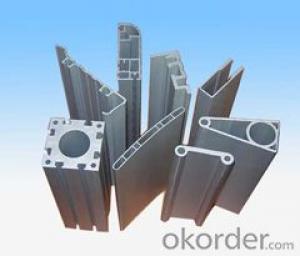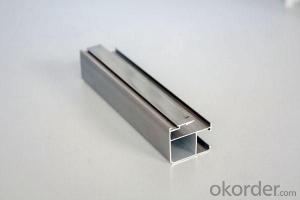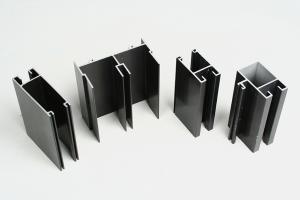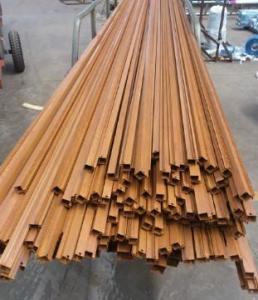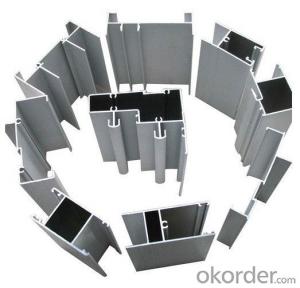Aluminum Extrusion Heat Sink Profiles for Surface Treatment Aluminum Profiles for Windows and Doors
- Loading Port:
- China Main Port
- Payment Terms:
- TT OR LC
- Min Order Qty:
- -
- Supply Capability:
- -
OKorder Service Pledge
OKorder Financial Service
You Might Also Like
Aluminium is a relatively soft, durable, lightweight, ductileand malleablemetalwith appearance ranging from silvery to dull gray, depending on the surfaceroughness. It is nonmagnetic and does not easily ignite. A fresh film ofaluminium serves as a good reflector (approximately 92%) of visible lightand an excellent reflector (as much as 98%) of medium and far infraredradiation. The yield strength of pure aluminium is 7–11 MPa,while aluminium alloys have yield strengths ranging from200 MPa to 600 MPa. Aluminium has about one-third the densityand stiffness of steel. It is easily machined,cast, drawn and extruded.
Features:
Material | Alloy 6063,6061,6005or according to customer’s choice |
Temper | T3, T4, T5, T6 |
Surface | Anodize, electrophoresis, powder coating, PVDF coating, wood grain painting, matted, etc. |
Length | Coating 6.5 meters, Anodizing 6.5 meters, Mill finish 5 meters |
Application | Industrial, electrical equipment(TV set, air conditioner, refrigerator, computer), decoration,construction, transportation |
Custom Made | We can package following with customer's request. |
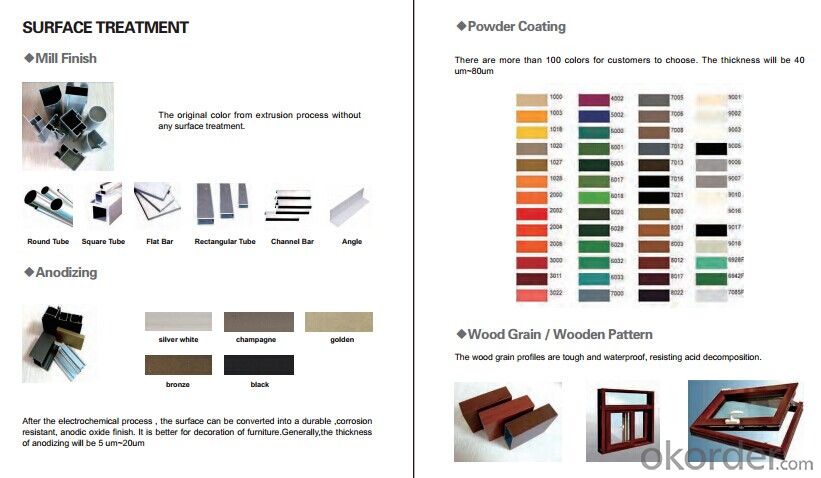
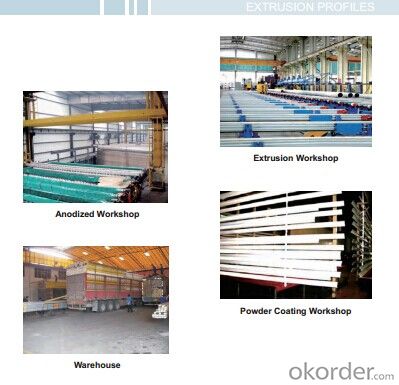

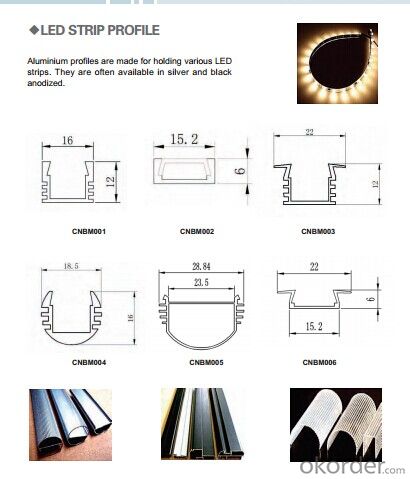
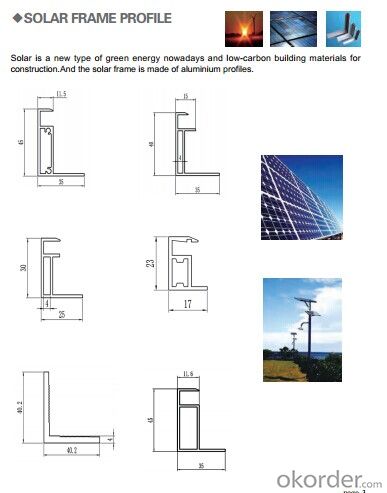

- Q: I am a mold professional, in school are mainly plastic mold and stamping die, but I am now in an aluminum extrusion die master apprentice. Draw pictures every day and walk around the workshop. But I have never met any related knowledge before, and I don't know where to start. I don't know what to do. Sometimes even want to give up, but not reconciled. I hope you can give me some advice. Thank you very much!!!
- From the process should start with its principle should be the same as extruded acrylic, before I was doing the plastic mold design, aluminum is also don't know is how to do it, then to the friend's factory seen their company production of acrylic rods, know is squeezed out. Aluminum extrusion type is, should the principle is the same, I have no contact with the mold design of aluminum, the questions you can answer you here, sorry oh!
- Q: Aluminum surface treatment products we have color (pure black and beige wood etc.), the surface coating by scratching the surface, color and color difference of aluminum (aluminum color, the background is simple) after repair or there will be a difference at present, technical staff provides a profile of color, it can paint pen profile the scratch (paint pen according to the material surface spray paint, please fill out this factory can scratch the gap! It's really hard to findConsult an expert who specializes in aluminum processing. What's the effective remedy for scratching after spraying? Are there any professional manufacturers of this kind of paint pen?
- Please fill out paint pen manufacturers can scratch the gap, is the best way, the color of the paint can't find the same, have a great relationship with the concentration ratio, so, when buying sheet with requirements of factory repair paint pen!
- Q: Can aluminum profiles be used for industrial workbenches?
- Yes, aluminum profiles can be used for industrial workbenches. Aluminum is a lightweight and durable material that is commonly used in industrial applications. It offers excellent strength-to-weight ratio, corrosion resistance, and can be easily customized to suit specific needs. Additionally, aluminum profiles can be easily assembled and disassembled, allowing for flexibility and easy modifications to the workbench layout.
- Q: What are the different types of hinges used with aluminum profiles?
- Aluminum profiles offer various options for hinges, each serving a specific purpose. Here are a few examples: 1. Butt hinges, the simplest type, consist of two plates connected by a pin. They facilitate smooth opening and closing of doors or panels. 2. For larger or heavier doors, piano hinges are ideal. These lengthy, narrow hinges run the entire length of the door, providing additional support and stability. 3. Concealed hinges, as the name implies, remain unseen when the door or panel is shut. They are perfect for achieving a seamless appearance, commonly used in cabinet doors. 4. Pivot hinges enable doors or panels to pivot on a single point. They are suitable for taller doors or those needing to swing in both directions. 5. European hinges, also known as cup hinges or hidden hinges, are adjustable and ensure a smooth opening and closing motion. These are commonly found in cabinet doors. 6. In high-traffic areas or where door closure is crucial, self-closing hinges are equipped with a spring mechanism that automatically closes the door or panel after opening. These examples demonstrate the variety of hinges available for aluminum profiles. The choice of hinge depends on factors such as the application, size and weight of the door or panel, desired aesthetics, and functional requirements.
- Q: What are the major factors determining the quality of aluminum profiles?
- Material, section size, fit tolerance, surface treatment quality, etc.
- Q: Are there any differences between aluminum alloy and aluminum alloy?
- Aluminum alloy refers to the material, aluminum alloy refers to the productIt's like the difference between gold and gold
- Q: Can aluminum profiles be used in agricultural machinery manufacturing?
- Aluminum profiles are indeed applicable in the manufacturing of agricultural machinery. Aluminum, being a lightweight and versatile material, offers numerous advantages for agricultural machinery. It possesses corrosion resistance, which is crucial for machinery exposed to harsh weather and farming chemicals. Furthermore, aluminum profiles have an exceptional strength-to-weight ratio, allowing the creation of robust and long-lasting machinery without unnecessary weight. The high thermal conductivity of aluminum also ensures efficient dissipation of heat, preventing machinery components from overheating. In addition, aluminum profiles are easily shaped, machined, and welded, providing flexibility in design and manufacturing processes. In summary, the incorporation of aluminum profiles in agricultural machinery manufacturing can lead to enhanced performance, fuel efficiency, and decreased maintenance costs.
- Q: This question asks about the various types of aluminum profiles that are utilized in flooring systems, seeking to understand their specific applications and characteristics.
- <p>Aluminum profiles for flooring systems are designed for specific purposes and come in various types, including: 1. T-profiles, which are used as support beams for raised access floors; 2. L-profiles, often used for edge trims and transitions; 3. H-profiles, serving as main beams in the flooring structure; 4. U-channels, used for cover strips and edge protection; 5. C-profiles, which can be used for cable management within the floor void; 6. Z-profiles, suitable for joint covers and transitions. These profiles are chosen based on the load-bearing requirements, aesthetic considerations, and specific structural needs of the flooring system.</p>
- Q: What are the benefits of using aluminum profiles in interior design?
- There are several benefits of using aluminum profiles in interior design. Firstly, aluminum profiles are highly versatile and can be used in a wide range of applications. They can be easily customized and fabricated to fit different design requirements. Whether you are designing a modern, minimalist space or a traditional, ornate interior, aluminum profiles offer a flexible solution. Secondly, aluminum profiles are lightweight yet durable, making them an ideal choice for interior design. They are resistant to corrosion, moisture, and temperature changes, ensuring a long lifespan. This durability also means that aluminum profiles require minimal maintenance, saving both time and money in the long run. Another benefit of using aluminum profiles is their aesthetic appeal. They come in a variety of finishes, colors, and textures, allowing designers to achieve their desired look and feel. Aluminum profiles can be anodized, powder-coated, or polished, giving them a sleek and modern appearance. They can also be designed to mimic other materials, such as wood or stainless steel, while offering the added benefits of aluminum. Additionally, aluminum profiles offer excellent thermal and acoustic insulation properties. They can help regulate temperature and reduce noise levels, creating a more comfortable and peaceful environment. This is especially beneficial in areas where soundproofing or energy efficiency is required, such as offices, hotels, or residential spaces. Lastly, aluminum profiles are eco-friendly and sustainable. Aluminum is a highly recyclable material, and using aluminum profiles in interior design helps reduce waste and minimize environmental impact. Moreover, aluminum profiles can contribute to energy efficiency by allowing natural light to enter a space, reducing the need for artificial lighting during the day. In conclusion, the benefits of using aluminum profiles in interior design are versatility, durability, aesthetic appeal, thermal and acoustic insulation, and sustainability. These qualities make aluminum profiles a popular choice among designers and architects looking to create functional and visually appealing spaces.
- Q: Is aluminum alloy made of industrial aluminum?
- Aluminum profile is an applied product form of aluminum alloyAluminum is the aluminum bar through hot melt, extrusion, so as to obtain different cross-section of aluminum. The production process of aluminum profile mainly includes three processes: casting, extrusion and coloring.First, according to use can be divided into the following categories: 1. building doors and windows, aluminum doors and windows [1] (divided into two windows and curtain walls). Special aluminum radiator 2. CPU radiator 3. Aluminum Alloy shelf aluminum profile, the difference between them is that the different cross-sectional shapes. They are produced by hot melt extrusion 4.. Industrial aluminum: mainly used in automation equipment, sealing cover skeleton and the custom mold machinery and equipment according to their own requirements, such as assembly line conveyor belt, hoisting machine, glue machine, testing equipment, electronic machinery industry and clean room with the majority!
Send your message to us
Aluminum Extrusion Heat Sink Profiles for Surface Treatment Aluminum Profiles for Windows and Doors
- Loading Port:
- China Main Port
- Payment Terms:
- TT OR LC
- Min Order Qty:
- -
- Supply Capability:
- -
OKorder Service Pledge
OKorder Financial Service
Similar products
Hot products
Hot Searches
Related keywords

